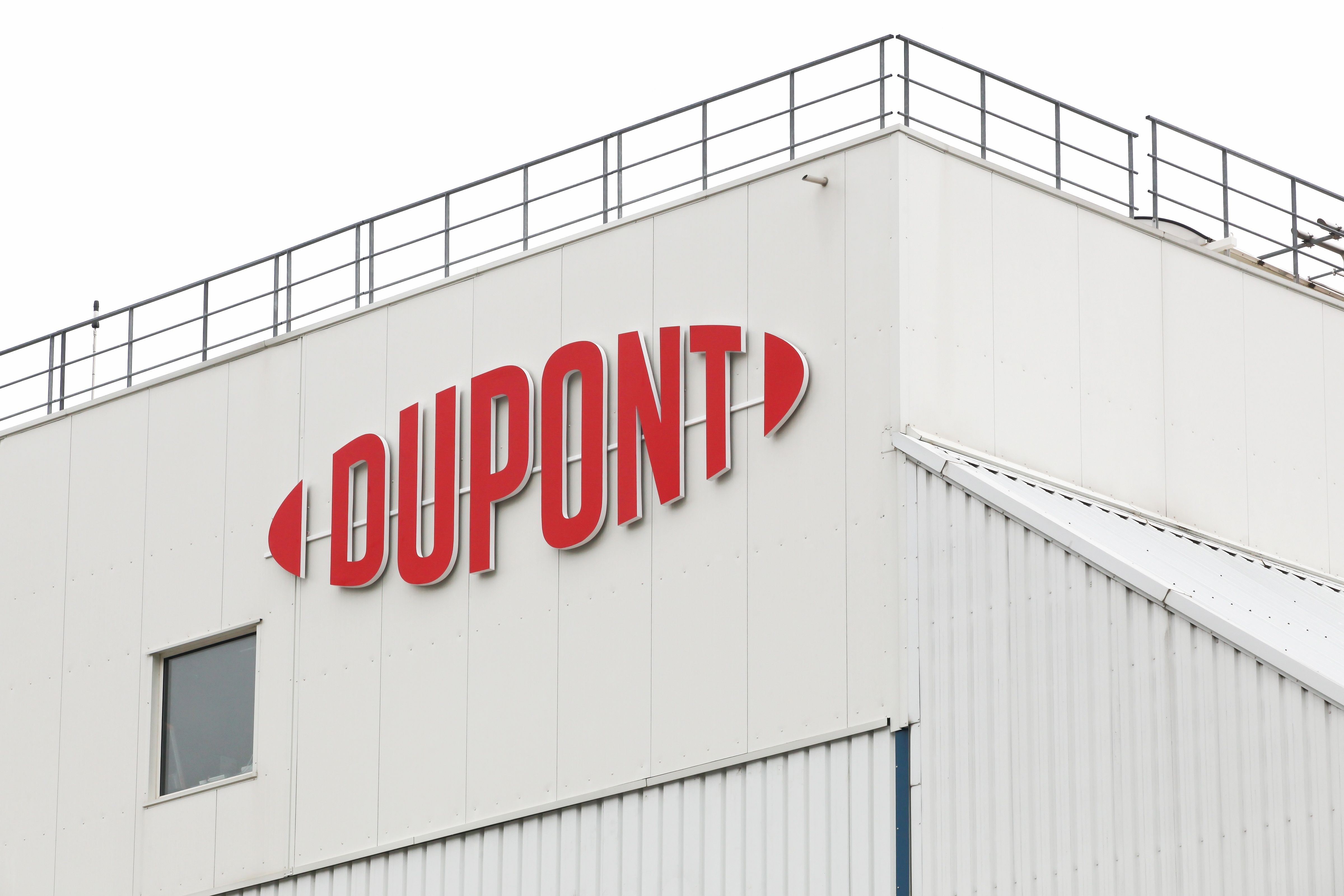Are "Forever Chemicals" Really Forever?
LCGC’s Senior Technical Editor Jerome Workman, Jr examines the history of chemicals classified as POP, or persistent organic pollutants, and PFAS, or per- and polyfluoroalkyl substances, then reviews their place in today's environment and assesses risks for the future.
PFAS Contamination of Drinking Water - Alertness about dangerous PFAS per-and polyfluoroalkyl substances presence in potable water - Concept with magnifying glass | Image Credit: © Francesco Scatena - stock.adobe.com

Persistent Organic Pollutants (POPs) and PFAS: A Global Challenge
Persistent organic pollutants (POPs) and per- and polyfluoroalkyl substances (PFAS) have gained notoriety as "forever chemicals" due to their unwanted permanence in the environment. These toxic substances are known to travel globally, negatively impacting human health and the ecosystem.
POPs encompass a range of hazardous chemicals, including notorious compounds like DDT, PCBs, PFAS, and dioxins. Meanwhile, PFAS, widely used in industrial and consumer products for their non-stick, water-repellent, and fire-resistant properties, have become one of the most persistent groups of chemicals found in the environment. The longevity of these substances raises significant concerns as they continue to accumulate and affect various species in the food chain (1).
In 2001, the Stockholm Convention was established to tackle the problem of POPs. This treaty, with participation from various countries, aims to reduce or eliminate 12 key POPs, including DDT, PCBs, and dioxins. Although the United States has not become a party to the Convention, it has actively contributed to controlling POPs both domestically and internationally. The U.S. has made significant strides in reducing dioxin and furan emissions and has supported initiatives worldwide to minimize the release of POPs (1).
Disturbingly, a recent analysis of previously undisclosed industry documents by academic researchers from the University of California, San Francisco (UCSF) reveals that major chemical companies, including DuPont and 3M, have known about the health hazards associated with PFAS for more than 60 years (2).
The History of PFAS: A Legacy of Concealment
PFAS chemicals have been widely used since the 1940s due to their unique properties, making them valuable in various industrial and commercial applications. These properties, including oil and water repellency, temperature resistance, and friction reduction, have led to their inclusion in non-stick cookware, fabric treatments, food packaging, and even military and industrial uses. However, concerns have grown due to the persistence of PFAS in the environment and their ability to accumulate in living organisms.
Sassenage, France - September 10, 2019: DuPont factory in France. DuPont is one of America's most innovative companies and it is an American chemical company | Image Credit: © Ricochet64 - stock.adobe.com

Surprisingly, the public health community remained largely unaware of the toxicity of PFAS until the late 1990s. A critical analysis of industry documents conducted by researchers reveals that major PFAS manufacturers, including DuPont and 3M, were aware of the chemicals' hazards as early as 1970. The industry possessed knowledge that PFAS were "highly toxic when inhaled and moderately toxic when ingested," yet they chose to keep this information hidden from the public for decades (3).
The tactics employed by the chemical industry to manipulate science and delay the disclosure of PFAS harms mirror those previously used by other industries, such as tobacco and pharmaceuticals. These tactics included suppressing unfavorable research findings and distorting public discourse to downplay the risks associated with PFAS. The industry's influence on research and publication played a significant role in delaying the implementation of regulations governing PFAS use and environmental protection.
The consequences of this delay have been severe, resulting in widespread exposure to PFAS in the population and environment. PFAS have been detected in water supplies, food packaging, personal care products, household dust, and even in human tissues. These chemicals have been linked to adverse health effects, including reduced fertility, developmental delays, hormonal disruption, high blood pressure, and an increased risk of certain cancers (3).
Community awareness calls for greater transparency in industry-driven research on industrial chemicals to prevent similar delays in the future. Legal settlements against chemical manufacturers should include the disclosure of documents to ensure accountability and transparency. Moreover, public health and environmental policymakers are urged to adopt precautionary principles in chemical regulation to protect the public's health and the environment.
The revealed history of PFAS use underscores the importance of holding industries accountable for the potential harms caused by their products. It emphasizes the need for more rigorous regulation and consumer awareness to demand safer products and protect public health from the hazards posed by forever chemicals like PFAS.
Looking at PFAS: The Persistent Challenge
Per- and polyfluoroalkyl substances (PFAS) have become emblematic of the "forever chemicals" due to their exceptional persistence in the environment. These synthetic chemicals are extensively used in a variety of products, from industrial applications to consumer goods, owing to their unique properties. PFAS are resistant to breaking down, resulting in their widespread contamination of water systems and ecosystems. Studies have linked PFAS exposure to various health issues, including reproductive and developmental problems, liver damage, and immune system disruption. The long-lasting nature of these chemicals has raised growing concern and prompted regulatory efforts to address and mitigate PFAS pollution (2).
Washington DC, USA - January 28, 2017: Environmental Protection Agency EPA headquarters | Image Credit: © Kristina Blokhin - stock.adobe.com

Recently discovered industry documents reveal that major chemical companies have known about the health hazards associated with PFAS for more than 60 years. These documents, dating back to 1961, were discovered during litigation and marked as confidential (2). They contained evidence of PFAS toxicity from internal animal and occupational studies that were not published or reported to the US Environmental Protection Agency (EPA) as required under the US Toxic Substances Control Act. The lack of transparency raises concerns about the accountability of chemical companies regarding the safety of their products and the urgency of addressing PFAS pollution and its impact on human health and the environment (2).
The industry's knowledge of adverse health effects linked to PFAS dates back at least 21 years before they were publicly reported. As early as 1959, one of the earliest studies associated PFAS exposure with respiratory and dermal toxicity. A 1961 report by DuPont's chief technologist identified enlarged livers in rats exposed to C8, a PFAS compound used in non-stick Teflon products. In 1980, DuPont and 3M discovered that pregnant employees exposed to C8 had children with birth defects, but this crucial information was not disclosed to employees or published in the scientific literature (2).
The analysis exposes a troubling pattern of PFAS manufacturers concealing the health risks of their products while being aware of or suspecting serious hazards long before the public became informed. The findings underscore the importance of transparency and responsibility from chemical companies regarding the safety of their products and highlight the urgency of addressing PFAS pollution to protect human health and the environment.
PFAS Chemicals: A Ubiquitous Presence
The persistence of PFAS in the environment has raised significant concerns among scientists and environmentalists. These chemicals are widely used in various products, ranging from clothing, furniture, and electronics to food packaging and firefighting foam. Their widespread distribution leads to their presence in raindrops, resulting in contamination from the sky (4).
girl wearing soft contact lenses close-up macro | Image Credit: © daniiD

One of the most concerning exposure routes is through soft contact lenses, often considered a safe and convenient vision correction option. Recent tests commissioned by consumer watchdog Mamavation and Environmental Health News revealed that 18 popular brands of soft lenses, including those from well-known companies like DuPont and 3M, contain PFAS (4).
Inside homes, individuals encounter PFAS through everyday products and personal possessions. Body care items like shampoo, dental floss, and toilet paper, as well as beauty products such as nail polish and eye makeup, often contain PFAS to enhance their properties. Similarly, cell phones, mattress pads, and wall paint are common household items that may contain PFAS.
Household dust becomes a significant source of PFAS exposure as chemicals from various products, including furniture and personal care items, are released into the air and accumulate in dust particles. This poses a particular risk to infants and children who spend more time on floors and can inhale or ingest contaminated dust.
Even food items are not exempt from PFAS contamination. Food packaging, including plastics and grease-resistant paper, can leach these chemicals into the food. Additionally, fresh foods like fish and dairy products can be contaminated if sourced from polluted water bodies, making PFAS exposure a concern through various routes.
Another surprising exposure route comes from exercise wear, such as yoga pants and sports bras, as they may contain PFAS in the crotch area and over the nipple region. For new mothers who may exercise and breastfeed, this presents an additional hazard.
Tap water is also a common source of PFAS exposure for millions of Americans. Although the Environmental Protection Agency (EPA) regulates only two types of PFAS in water supplies, many other PFAS chemicals remain unregulated. Groundwater leaching from areas where firefighting foam is used, like airports and military sites, can contaminate water sources. The EPA estimates that tens of millions of Americans drink tap water containing PFAS, and switching to bottled water does not necessarily eliminate the risk, as PFAS has been detected in some bottled water as well (4).
The recent EPA announcement proposing the elimination of four common and hazardous PFAS from the national water supply is a step towards addressing the issue. However, considering the widespread presence of PFAS in numerous products and household items, more comprehensive regulations and public awareness are needed to mitigate the risks associated with these persistent chemicals.
PFAS in Our Drinking Water: An Alarming Presence
Environmental Working Group (EWG) has been warning about the widespread presence of PFAS chemicals since 2015. Their latest round of testing, conducted in 18 states, including major cities and smaller communities, reinforces the alarming message that PFAS contamination is a significant problem in drinking water across the United States (5).
Woman filling a glass of water from a tap | Image Credit: © michaelheim

The testing found PFAS in samples from various locations, with some communities reporting these chemicals for the first time. Some samples detected well-known PFAS compounds, including PFOA and PFOS, which are currently targeted for regulation by the U.S. Environmental Protection Agency (EPA). However, there are other PFAS compounds not covered by the EPA's planned regulations or existing reporting requirements, which were also found in water systems.
A recent study by the U.S. Geological Survey estimated that approximately 45 percent of tap water in the U.S. may be contaminated with at least one PFAS compound, underscoring the magnitude of the problem (5).
The EPA is set to release data from its Fifth Unregulated Contaminant Monitoring Rule (UCMR 5), requiring water systems to test for 29 PFAS compounds not regulated under federal drinking water laws. The release is expected to reveal thousands of new locations with PFAS contamination, affecting millions more Americans than previously known. The data, combined with EWG's extensive mapping of PFAS contamination, is expected to provide compelling evidence for the EPA to finalize its proposed regulations on PFAS in drinking water.
As awareness grows about the ubiquity of PFAS contamination in drinking water, there is an urgent need for action to address this crisis and protect public health. Contaminated water supplies pose a threat to communities nationwide, and stringent regulations are necessary to ensure safer drinking water for all.
Addressing Forever Chemicals for a Sustainable Future
POPs and PFAS pose significant challenges to human health and the environment due to their unwanted permanence and persistence. POPs have global impacts, traveling through wind and water to affect regions far from their sources. The Stockholm Convention aims to address these issues by reducing or eliminating key POPs, although the United States has yet to join the treaty.
Firefighting foam remains on the ground surface following a tanker truck accident. | Image Credit: © Jana

PFAS, on the other hand, are known for their persistence and have become widely used in various products, leading to their presence in water systems, food, household items, and even human tissues. The concealment of information about PFAS toxicity by chemical manufacturers for decades highlights the need for greater transparency and accountability in the industry.
The widespread presence of PFAS in drinking water across the United States underscores the urgency of addressing this issue to protect public health. The EPA's proposed regulations on PFAS in drinking water are steps in the right direction, but more comprehensive measures are needed to mitigate the risks associated with these forever chemicals.
Addressing the challenges posed by forever chemicals requires international cooperation, stringent regulations, and increased public awareness. By taking proactive steps to reduce the use and release of POPs and PFAS, we can work towards a more sustainable and healthier future for both humans and the environment.
References
(1) U.S. EPA. Persistent Organic Pollutants: A Global Issue, A Global Response. https://www.epa.gov/international-cooperation/persistent-organic-pollutants-global-issue-global-response (accessed 2023-08-02).
(2) Trager, R. Chemical firms kept data on PFAS health hazards secret. Chem. World 2023, 20 (7), 20. https://www.chemistryworld.com/news/chemical-firms-kept-data-on-pfas-health-hazards-secret/4017528.article (accessed 2023-08-02).
(3) Gaber, N.; Bero, L.; Woodruff, T. J. The Devil they Knew: Chemical Documents Analysis of Industry Influence on PFAS. Ann. Glob. Health. 2023, 89 (1), 37. DOI: 10.5334/aogh.4013
(4) Kluger, J. All The Stuff in Your Home That Might Contain PFAS 'Forever Chemicals'. Time, May 19, 2023. https://time.com/6281242/pfas-forever-chemicals-home-beauty-body-products/ (accessed 2023-08-02).
(5) Lacey, A; Evans, S. ‘Forever chemicals’ found in water coast to coast builds case for strict EPA limits. Environmental Working Group (EWG), July 18, 2023. https://www.ewg.org/areas-focus/toxic-chemicals/pfas-chemicals (accessed 2023-08-02).
Characterizing Plant Polysaccharides Using Size-Exclusion Chromatography
April 4th 2025With green chemistry becoming more standardized, Leena Pitkänen of Aalto University analyzed how useful size-exclusion chromatography (SEC) and asymmetric flow field-flow fractionation (AF4) could be in characterizing plant polysaccharides.




